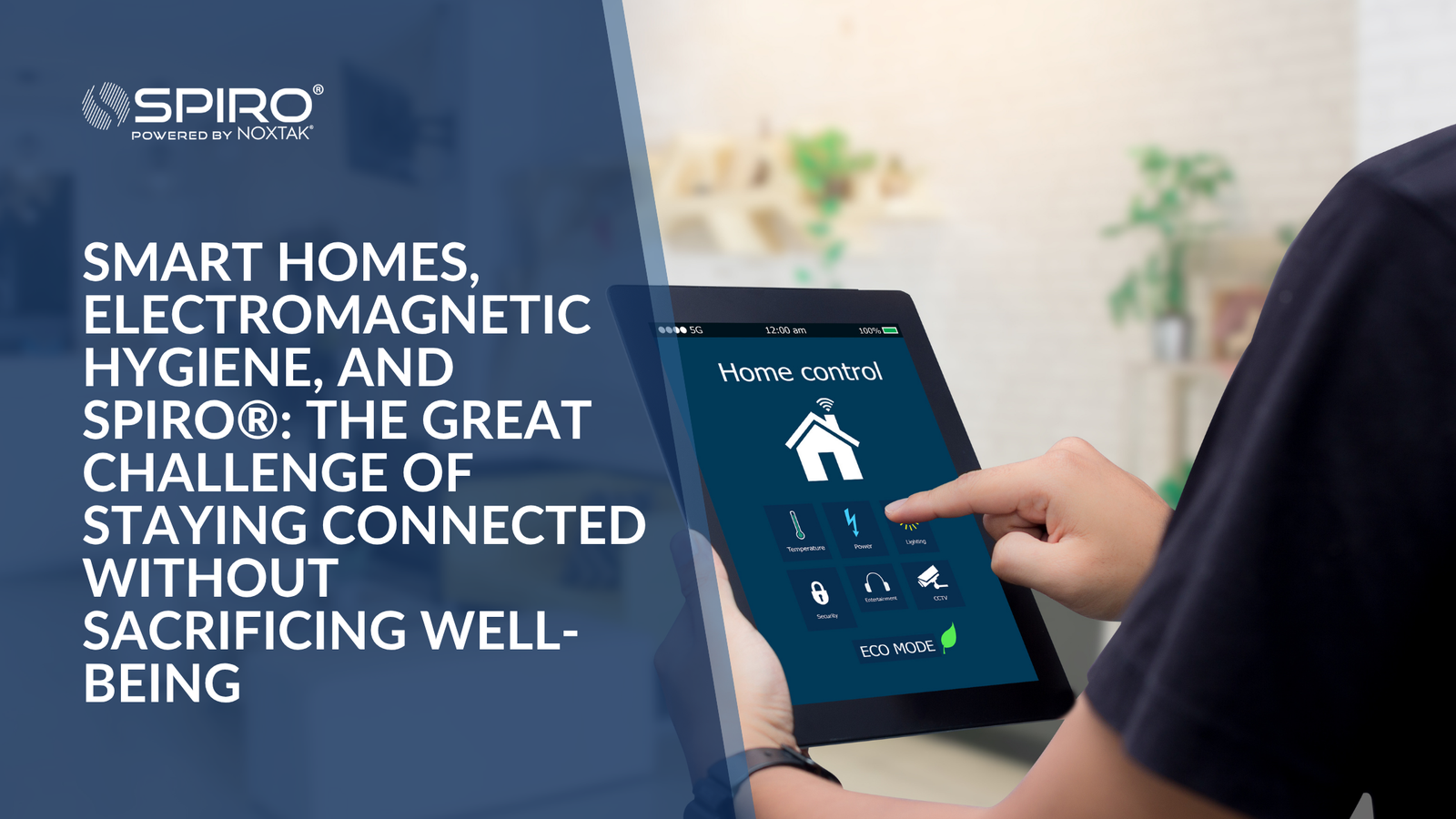Smart Homes, Electromagnetic Hygiene, and SPIRO®: The Great Challenge of Staying Connected Without Sacrificing Well-being

Home digitalization is no longer a trend—it has become the norm. Today, we don’t just live with high-speed Wi-Fi, virtual assistants, and smart appliances, but within an ecosystem where every device constantly communicates with others. While the average home has between 20 and 25 connected devices, a smart home can have anywhere from 50 to 100 active devices simultaneously. This hyperconnectivity poses a significant challenge to the electromagnetic and environmental health of the space.
A Holistic Vision for a Biocompatible Home
At NOXTAK®, through specialized assessments, we’ve learned that a truly healthy home is not only about the type of technology used, but how it is integrated. For a smart home to meet biohabitability standards, a comprehensive approach is required—one that considers:
-
Flicker-free lighting with appropriate color temperature
-
Good natural light intake and cross ventilation
-
Strategic relocation of emitting sources to reduce low-frequency electric fields
-
Serial implementation of SPIRO® filters and STROOM MASTER systems to control dirty electricity and artificial quantum noise (AQN)
This type of planning is essential to reduce the invisible burden that affects our neurological, hormonal, and cellular functions.
Why Do Smart Homes Increase Exposure?
The combination of devices such as mesh routers, virtual assistants, cameras, projectors, dimmers, hubs, and Bluetooth technology creates a dense mesh of polluted electromagnetic fields. Although these devices comply with EMC standards, that doesn’t guarantee their biocompatibility. This is where the ALARA principle comes into play: “As Low As Reasonably Achievable,” which encourages us to minimize exposure as much as reasonably possible.
Recommended Habits to Reduce Direct Exposure
A healthy home is also built through conscious habits. Some essential practices include:
-
Turning off Wi-Fi at night or using a timer
-
Replacing wireless connections with Ethernet cables when feasible
-
Avoiding the placement of routers, hubs, or repeaters in bedrooms
-
Creating clean rest zones with no active emissions
-
Activating airplane mode on mobile devices during sleep
-
Keeping chargers, tablets, and virtual assistants away from the body
SPIRO®: Serial and Personalized Electromagnetic Filtering
Implementing SPIRO® is not about placing a device randomly in the home. The correct placement of the right filter in the right location makes all the difference. That’s why professional assessments of electromagnetic pollution are highly recommended—especially in smart homes, where environmental complexity requires a calibrated strategy.
At the NOXTAK Center, we’ve built a robust database of case studies in hyperconnected homes, allowing us to precisely define the type and number of filters needed. In fact, these homes often require twice as many dirty electricity filters compared to standard homes.
Strategic Implementation of SPIRO® in Smart Homes:
-
STROOM MASTER, installed in series within the electrical network
-
SPIRO® DISC on the main electrical panel
-
SPIRO® DISC / DISC X / ULTRA: For general areas, bedrooms, multi-screen environments, and automation zones.
-
SPIRO® SQUARE X: For high-traffic routers, home automation hubs, or workstations.
-
SPIRO® SQUARE: For virtual assistants, tablets, and electronic toys.
This serial approach, supported by real-world cases and clinical studies, ensures effective and continuous reduction of electromagnetic pollution without sacrificing technological functionality.
Conclusion
Living in a smart home is not without challenges. However, thanks to technologies like SPIRO® and the technical knowledge accumulated by the NOXTAK Center, we can now achieve healthy coexistence with technological advancement. It’s not about giving up digital comfort, but about managing it intelligently and with evidence.
Technology is not the enemy. The real risk lies in ignoring its invisible impact. With SPIRO® and a proper strategy, it is possible to live in smart homes that are also biocompatible.



